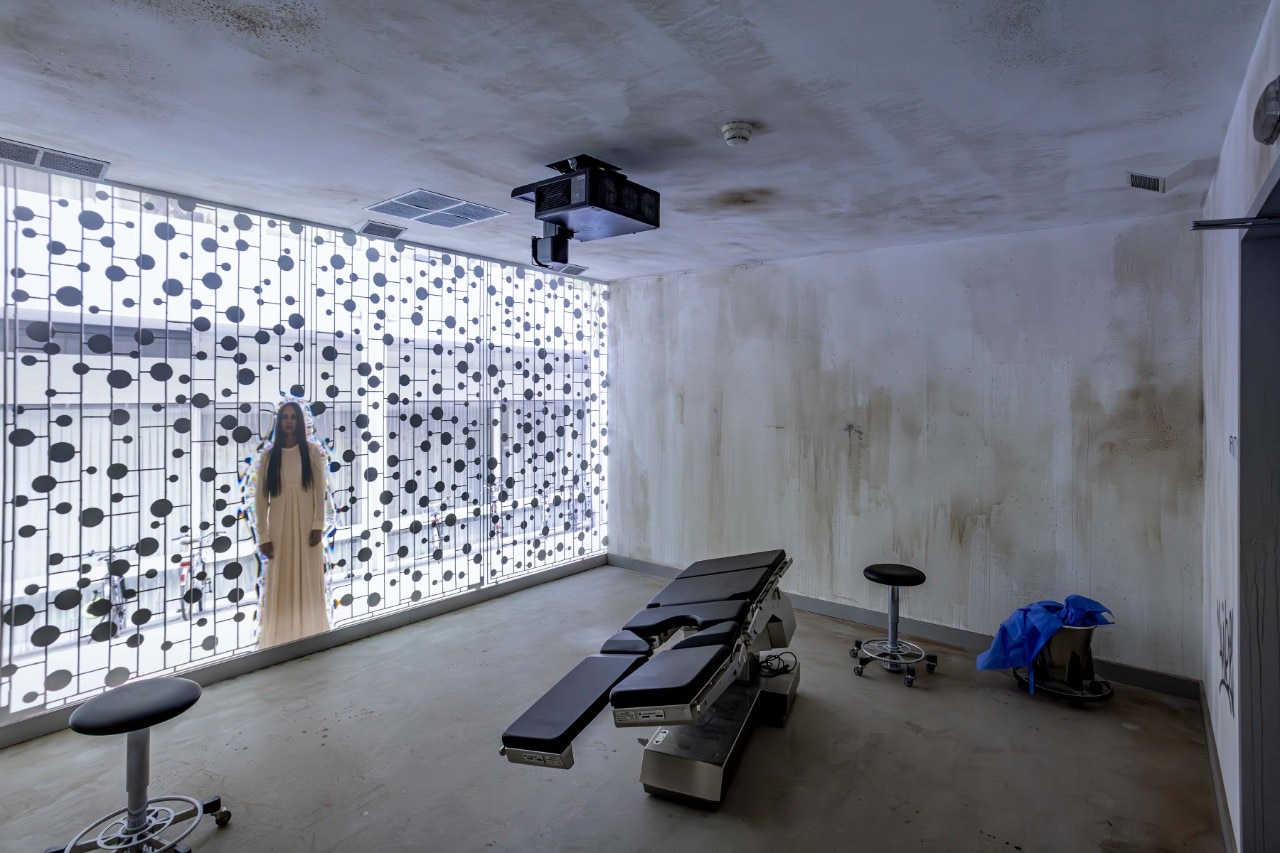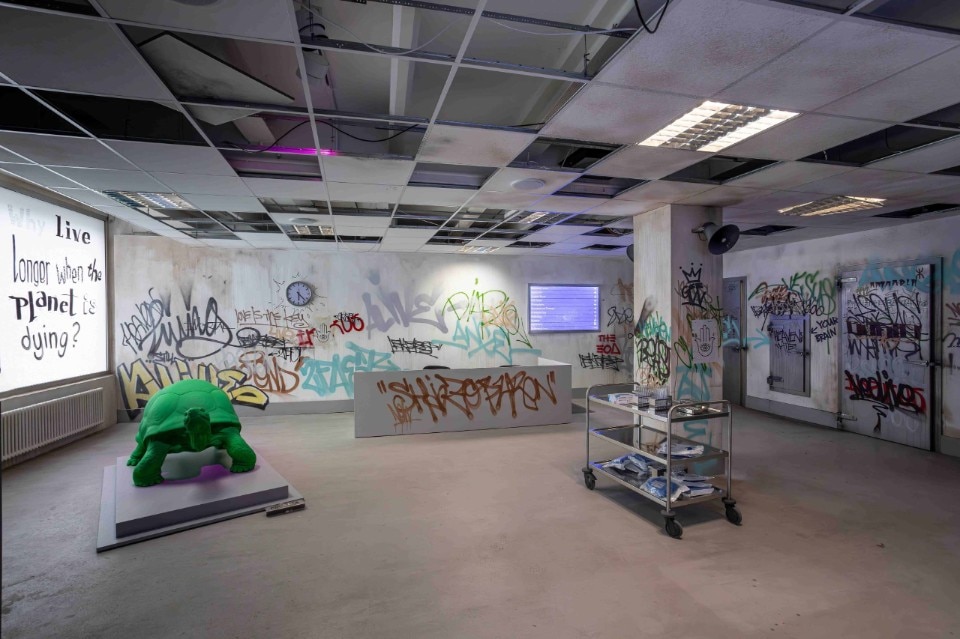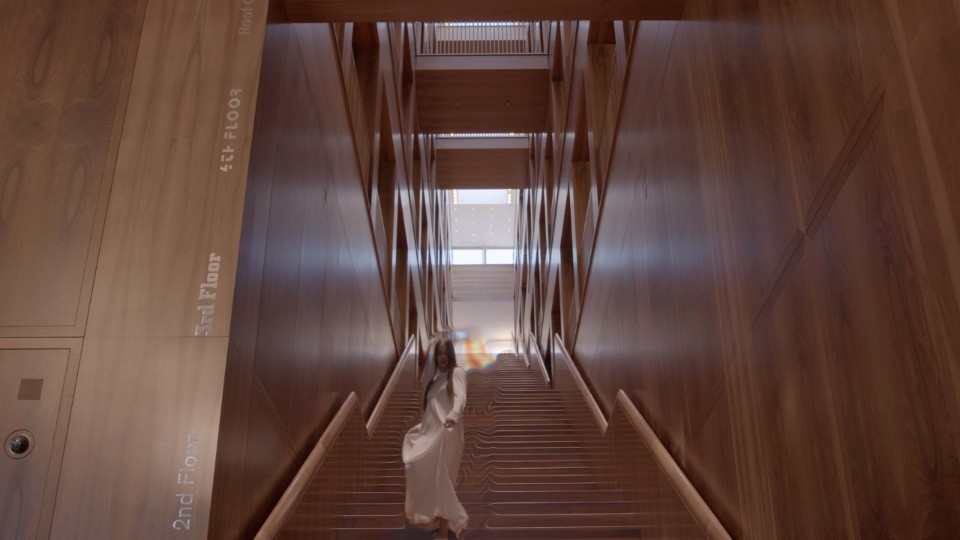Welcome back. This is the message that visitors see at the end of the immaculate and bright corridor marking the exit of “The End of Aging,” the exhibition at Kulturstiftung Basel H. Geiger in Basel. However, it might not be a message for the visitors but for Kaspar, the protagonist of the story featured in good portion of the volume accompanying the exhibition. After a prolonged cryogenic sleep, Kaspar awakens in the future in an abandoned hospital, much like the space that houses the exhibition. “For many visitors, the exit is a new beginning, as they embark on a new journey,” explains Michael Schindhelm, the creator (not “curator,” he emphasizes) of “The End of Aging” and the author of Kaspar's story.
We will die young, but after a long life.
Raphael Suter
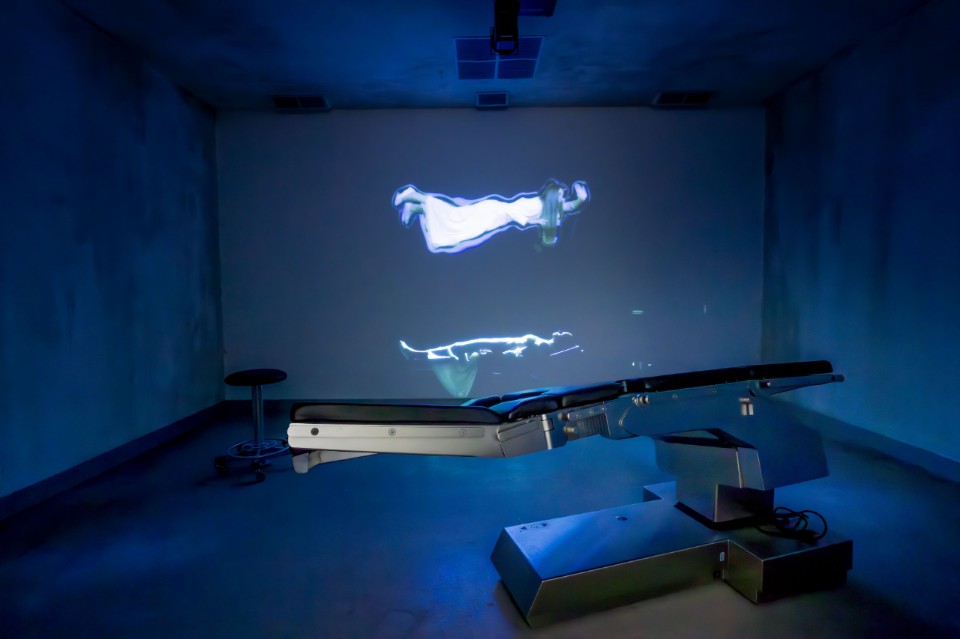
The dream of living forever or extending one’s life indefinitely has accompanied humankind since ancient times, woven into the narratives and myths of every culture. Recently, this dream has evolved into a scientific project, as filmmaker, curator, and former scientist Michael Schindhelm explains to Domus. While the 1990s imagined eternal life as the fusion of humans and computers, today, biology – thanks to genetics – offers a vision of a future where we could live twice as long and, most importantly, without aging. The exhibition, aptly named “The End of Aging,” could have just as easily been called “The End of Suffering,” yes, that caused by the decay of body and mind. Visitors are greeted by a statue of a turtle at the entrance. Schindhelm explains that these creatures can live up to 250 years, but their bodies remain almost unchanged from the age of 50 until their death.
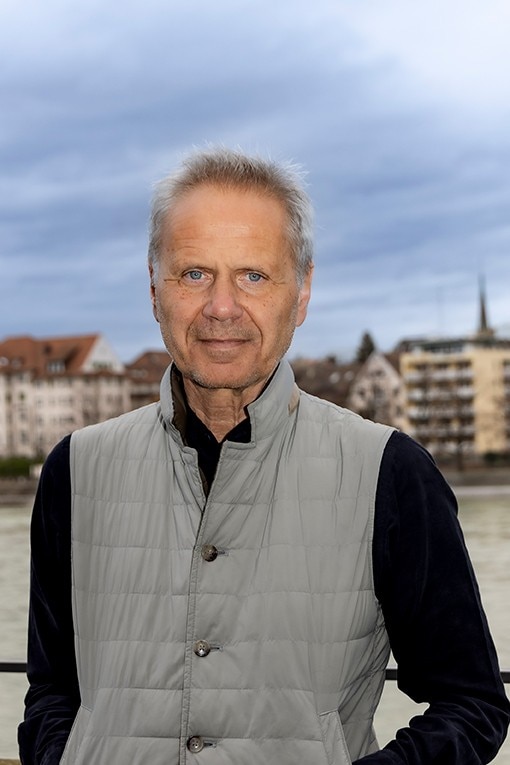
The exhibition is organized into two phases, representing two polar polarities in dialogue with each other. In the first phase, Schindhelm crafted a speculative fiction narrative, envisioning a world where the dream of longevity has come true. Visitors are immersed in a science fiction scenario with strong cyberpunk influences, navigating a future that could plausibly become our own. For this exhibition, the Kulturstiftung Basel H. Geiger's spaces have been transformed into a replica of an abandoned hospital, featuring contributions from Giulio Margheri of OMA, Luca Moscelli, founder of Buromosa, and sound designer Till Zehnder. The environment is dark and post-apocalyptic, yet deeply symbolic. “The hospital is a metaphor for our society,” Schindhelm explains. “We are all visitors in a hospital,” and the pandemic pointed out their dark side, becoming the “emblem of neglect.”
At the end of a journey through the dark, graffitied rooms of an abandoned hospital – featuring the artistic work of Urs Baur (aka Black Tiger) and Steven Gravino – where the only remnants of a humanity striving for immortality are encapsulated in videos, visitors encounter the large recovery room. Here, they lie like patients on cribs, with headphones positioned where IV drips would normally be, to experience the documentary portion of the exhibition. This documentary, spanning more than an hour and divided into 15 chapters, features renowned figures from the field of longevity science. Among the speakers are molecular biologist Michael N. Hall, Nobel laureate in chemistry Venki Ramakrishnan, epidemiologist Jess Bone, and other world-class scientists.
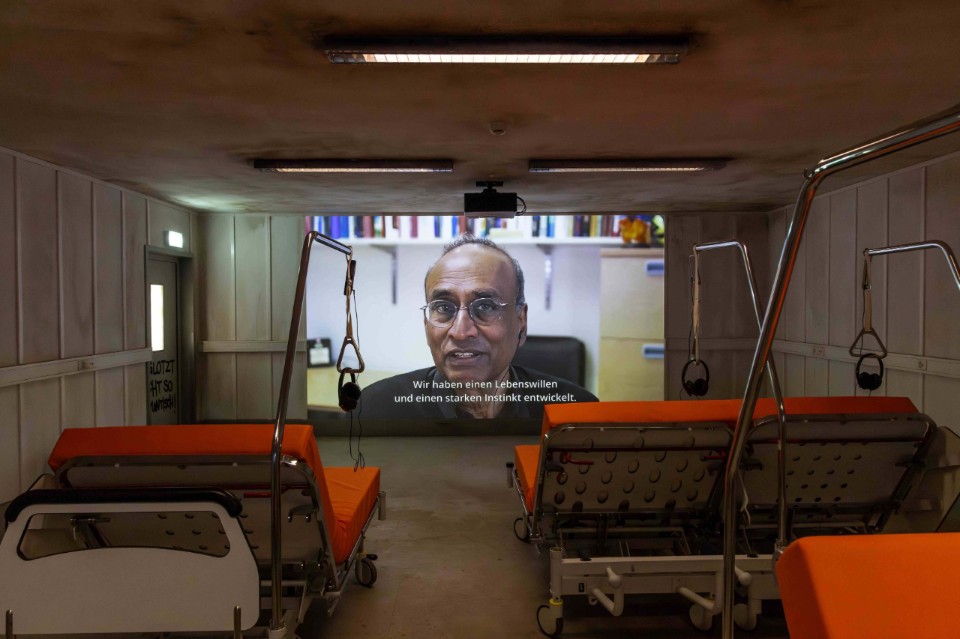
“Juxtaposing fiction and nonfiction allows visitors to experience the space and be provoked,” explains Schindhelm. He designed the exhibition to balance between “imaginative” and an “enlightening:” “art communicates to the gut and heart, science to the brain.” Both elements are essential for addressing such a complex theme. After the recovery room, visitors enter the white corridor, where they are greeted with the message “welcome back:” “many people don't leave; they stay for a very long time.”
“Never make boring exhibitions!” that’s what Sybille Geiger, who passed away three years ago, told Raphael Suter, a former journalist for the Basler Zeitung and now the director of the foundation named after Geiger, in honor of Sybille's grandfather Hermann, the founder of one of Switzerland's most important pharmaceutical companies – a legacy Sybille distanced herself from. Born in 1930, she pursued her passion for art from a young age, explains Suter. She moved to Paris, where she mingled with luminaries like Giacometti and Tinguely, and specialized as a theater costume designer in to Berlin and then Lucerne, where she even worked on spaghetti westerns. Sybille married an Italian and relocated to Tuscany, leading a fulfilling yet relatively normal life until the family business was acquired by a large multinational corporation.
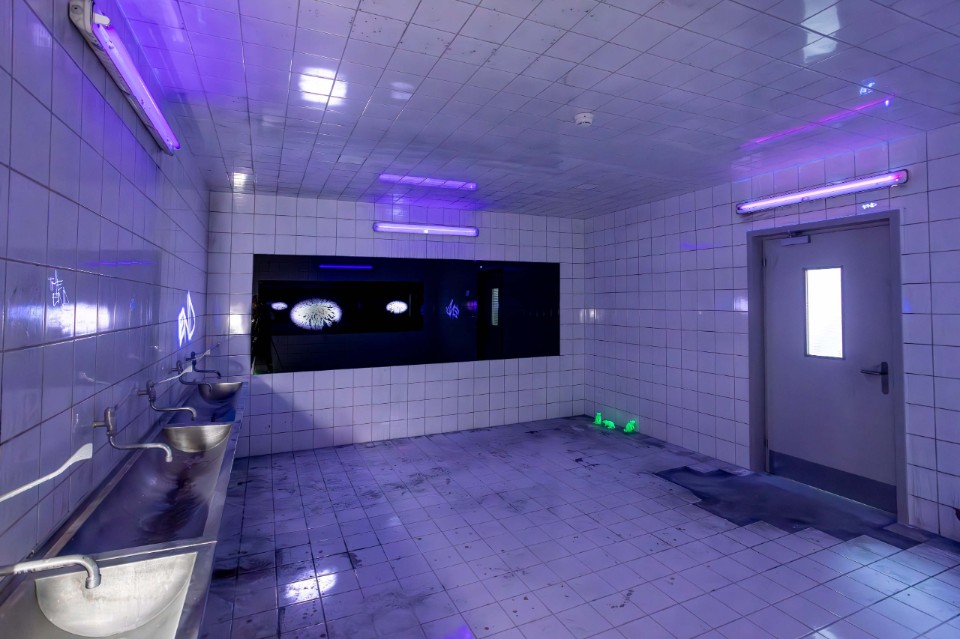
This turn of events made her one of the wealthiest individuals in Switzerland. In 2019, she decided to use her wealth to establish a foundation, initially in Cecina, where she lived, and later moving it to Basel. “We’re not a gallery and we don’t want to do what other people do,” Raphael Suter explains, recounting the unique history of the exhibitions at Kulturstiftung Basel H. Geiger (Kbh.G). This commitment to uniqueness is also reflected in their practice of creating and gifting a book for each exhibition to the visitors. Every exhibition is free, and Suter has great freedom with his budget. He tells Domus about some of the past exhibitions just by scrolling through the books, in the bright spaces of a former factory converted into a museum by Christ & Gantenbein. The themes are many, ranging from photography to music to ecology. Each time the space is completely transformed. This time in the hospital, almost a paradox for a building overlooking the Universitätsspital.
Going back to “The End of Aging” during our conversation, Suter quotes a passage from Ramakrishnan's interview: “When we are young, we want to be rich; when we are rich, we want to be young.” An emblematic statement that highlights one of the most dystopian aspects of the pursuit of immortality: its inextricable link to wealth.
We’re not a gallery and we don’t want to do what other people do
Raphael Suter
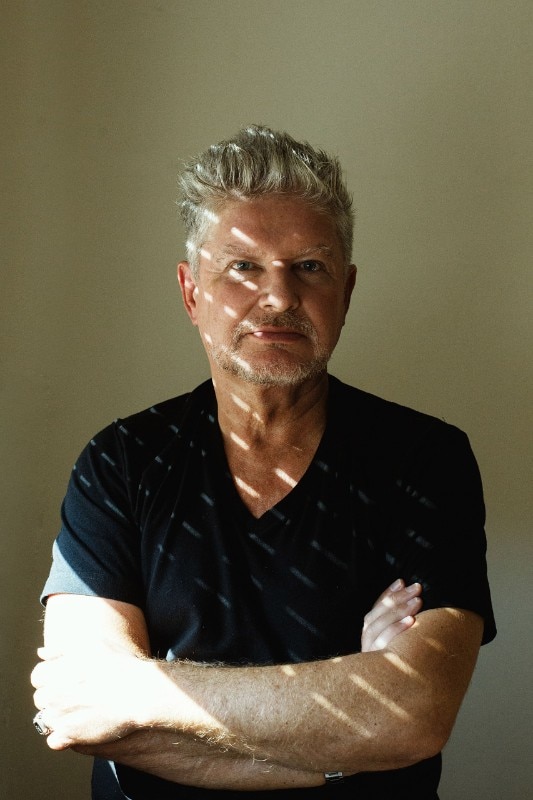
The desire for longevity, often an obsession for those who have everything, is beautifully metaphorized by the celebrity heads in the animated series Futurama, which debuted in the late 1990s, or by the urban legend of Walt Disney’s cryogenically preserved head. The philosopher’s stone of legend was said to turn any metal into gold and grant immortality. Today, we imagine a future where the 1 percent is beautiful, well-nourished, educated in the best schools, and, most importantly, capable of living extraordinarily long lives. The rest of society, however, may not.
It took two years to create this exhibition. “I learned a lot,” Michael Schindhelm explains. Interacting with longevity experts has convinced him that in the future, “we will die young, but after a long life.” Following “The End of Aging,” which closes in July, Schindhelm will present another exhibition at Kulturstiftung Basel H. Geiger (Kbh.G). This new exhibit will explore post-colonial Bali through the life of Walter Spies, a German painter and musician who moved to Bali in the late 1920s and played a crucial role in promoting Balinese culture in the West, significantly altering its trajectory.
- Exhibition:
- The end of aging
- Location:
- Kulturstiftung Basel H. Geiger, Basel, Switzerland
- Dates:
- from 3rd May to 21st July 2024


